Introduction
What Do Baby Pigeons Look Like: Baby pigeons, often referred to as squabs, are enigmatic creatures that remain largely hidden from the public eye, despite sharing our urban landscapes. While adult pigeons are a familiar sight in cities around the world, their young offspring are seldom observed or even discussed. This veil of obscurity surrounding baby pigeons stems from their unique nesting habits, as they are typically concealed within the hidden recesses of their nests high atop buildings or in trees.
Consequently, many people are left wondering what baby pigeons actually look like. In this introduction, we will unravel the mystery surrounding these avian infants, describing their appearance and shedding light on their intriguing journey from hatching to adulthood. Unlike the charming and charismatic image of adult pigeons, baby pigeons exhibit a stark contrast in their appearance. When newly hatched, squabs are incredibly delicate and vulnerable, bearing little resemblance to their parents.
Their bodies are mostly covered in sparse, soft, and downy feathers that range in color from pale gray to off-white. These fluffy feathers give them a somewhat disheveled appearance, making them seem somewhat unkempt. One of the most distinctive features of baby pigeons is their disproportionately large heads in comparison to their bodies. Their heads appear somewhat oversized, and their eyes are often closed or only partially open during the first few days of their lives.
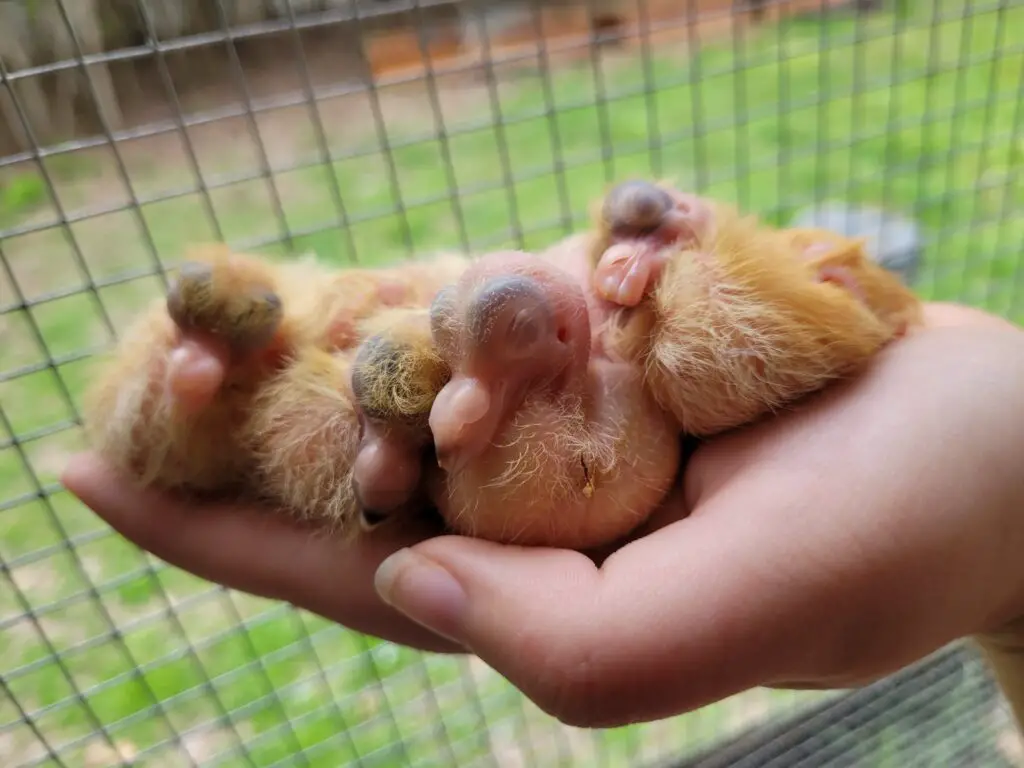
Why do we not see baby pigeons?
Baby pigeons spend a relatively long time in the nest, as much as four to five weeks. When they’re finally ready to fledge, they look just like adult pigeons. That’s why it’s rare to see a baby pigeon in the wild. By the time they leave the nest, they’re indistinguishable from their parents.
The absence of baby pigeons from our everyday urban scenery is a curious phenomenon that has puzzled many. One primary reason for this elusiveness lies in the nesting habits of pigeons. Pigeons, also known as rock doves, are renowned for their preference for hidden and sheltered nesting sites. They often select concealed locations such as building ledges, tree branches, or other elevated spaces to build their nests, providing both protection and privacy.
When baby pigeons, or squabs, are born, they are incredibly vulnerable. Their featherless, downy bodies and closed eyes make them dependent on their parents for warmth and nourishment. Consequently, they spend the initial days and weeks of their lives nestled within these well-protected nests, away from prying eyes on the ground.
Squabs are not known for their mobility during their early stages of development. They lack the ability to fly and are primarily stationary in their nests, making it even less likely for people to spot them. By the time they are large and mature enough to venture out of the nest, they have already undergone a remarkable transformation and closely resemble adult pigeons.
At what age can baby pigeons fly?
Generally speaking, baby pigeons are capable of flying at around 6 weeks of age. But after 4 weeks, they will start to flap their wings to start practicing and learning.
Squabs are born in a relatively helpless state with closed eyes and scant feathers. For the first two weeks or so of their lives, they rely entirely on their parents for warmth and nourishment. During this time, they grow rapidly, and their feathers gradually begin to replace the downy fluff covering their bodies.
Around the age of 25 to 32 days, depending on environmental factors and food availability, squabs typically become fledglings. At this stage, they are fully feathered, their eyes are open, and they have grown considerably in size. While they are technically capable of leaving the nest and attempting short flights, they are not yet proficient fliers.
It takes several more weeks of practice for young pigeons to develop strong flight skills and the ability to navigate their surroundings confidently. During this time, they continue to receive support and guidance from their parents, who teach them essential survival skills such as foraging and finding safe roosting spots.
Can a baby pigeon survive alone?
As long as the baby is bright, active, runs away from you and attempts to fly when needed, they can usually be left alone. The exception is if the baby is in a dangerous place and is not yet able to fly.
Baby pigeons, or squabs, are not well-equipped to survive alone immediately after hatching. They are born in a vulnerable state, with closed eyes and limited mobility. During their early days, squabs rely entirely on their parents for critical care and protection.
One of the primary reasons squabs cannot survive alone is their dependence on parental feeding. Pigeon parents produce a special secretion called “pigeon milk” in their crops, which is regurgitated and fed to the squabs. This highly nutritious substance provides essential nutrients and hydration necessary for their growth and development.
Squabs need their parents for warmth and protection. Pigeon parents maintain the nest environment, shielding the young birds from harsh weather conditions and potential predators. As squabs mature and their feathers develop, they gradually become more self-sufficient.
What do baby pigeons eat?
The newly hatched squabs are fed on pure crop milk for the first week or so of their lives. Then the parent birds begin to add a proportion of adult food to the mix until by the end of the second week the babies are being fed entirely on regurgitated adult food that has been softened by extra time in the crop.
Baby pigeons, or squabs, have a specialized diet during their early stages of life, and their nutritional needs are primarily met through their parents’ care. The primary source of nutrition for squabs is a substance known as “pigeon milk.” Pigeon milk is not actual milk but a specialized secretion produced in the crops of both parent pigeons, rich in proteins and fats.
Both the mother and father pigeon take turns regurgitating pigeon milk to feed their offspring. This highly nutritious substance helps the squabs grow rapidly and develop their feathers and other essential bodily functions. It’s a critical component of their diet during the first few weeks of life.
As squabs grow and their bodies become more developed, they start transitioning to a more solid diet. At this stage, the parents gradually introduce partially digested grains and seeds into their diet. These semi-solid foods help the squabs transition to a diet similar to that of adult pigeons.
What does a 1 week old pigeon look like?
When baby pigeons leave the nest, they look like small adults with fewer feathers, especially around the head and neck. Fledgling pigeons stay near the nest for a week or more but fend for themselves. This is the time baby pigeons will start looking like adults when their adult plumage.
A one week old pigeon, also known as a squab, undergoes a remarkable transformation in its appearance compared to when it was just a hatchling. At this stage, squabs have started to develop some distinguishing features.
Their most noticeable change is the growth of soft, downy feathers. These feathers are still quite sparse and fluffy, giving the squab a somewhat unkempt appearance. The color of these feathers can vary but is often pale gray or off white. These feathers provide some insulation but are not yet fully developed.
Their eyes, which were closed or only partially open during the first few days after hatching, are now typically fully open. This development allows them to start becoming more aware of their surroundings.
Despite these changes, one-week-old squabs are still quite fragile and entirely dependent on their parents for warmth, protection, and nourishment. They remain relatively immobile, spending most of their time nestled in the nest, where their parents feed them a specialized substance known as pigeon milk by regurgitating it into their beaks.
How do you feed a 1 month old pigeon?
Allow the pigeon to dip its head into the cup and pull up food. Pull it back every once and a while to check how full its crop is and to let it get some air. This process may not work for newborns, but it will work for most baby pigeons.
Pigeon Milk Transition: By the time a squab is one month old, it will have already transitioned from solely relying on pigeon milk provided by its parents. However, pigeon milk may still be part of its diet as a supplement. The parents might continue to regurgitate this nutritious substance occasionally.
Introduction of Solid Foods: To encourage the squab to adopt a more solid diet, offer a mix of softened seeds and grains. You can soak these in water to make them easier for the squab to consume. Pigeon feed or bird seed mixes are suitable options. Gradually increase the amount of solid food offered as the squab becomes more accustomed to it.
Feeding Frequency: Feed the one-month-old squab several times a day, simulating the feeding frequency it received from its parents. Initially, you may need to assist by placing the softened food in its beak, but as it grows more independent, it will start pecking at the food itself.
Fresh Water: Provide fresh, clean water in a shallow dish, as squabs at this age should start drinking water.
Observation: Keep a close eye on the squab’s eating habits and adjust its diet as needed. Make sure it is gaining weight and maintaining its health.
Gradual Weaning: Over the next few weeks, continue to reduce the frequency of feeding pigeon milk and increase the amount of solid food. The squab will gradually become more self-sufficient and less reliant on parental care.
Can baby pigeons eat bread?
Bread is fine for pigeons to eat in moderation, but it should not form a major part of their regular diet. Although not strictly bad for pigeons in small amounts, filling up on bread may lead to pigeons missing out on the vital balance of nutrients needed from eating a more diverse range of healthier foods.
While it’s a common sight to see people feeding pigeons bread in public places, especially in urban environments, it’s important to note that bread is not an ideal or nutritious food for baby pigeons or adult pigeons. Pigeons are omnivorous birds and have a varied diet that includes seeds, grains, fruits, and even small insects.
Feeding bread to baby pigeons, particularly at a very young age, is not recommended. Bread lacks the essential nutrients and proteins required for their growth and development. It can fill their stomachs without providing the necessary sustenance, potentially leading to malnutrition.
Instead, if you find a baby pigeon that needs assistance, it’s best to offer a diet that closely resembles what they would naturally consume. Specialized pigeon or bird seed mixes can be a better choice. You can also provide softened seeds or grains by soaking them in water to make them more digestible for young squabs. In emergencies, you might consult with a local wildlife rescue organization or veterinarian for guidance on proper care and feeding.
Can baby pigeons survive without their mother?
Moving the nest over even a few feet to a neighboring balcony can cause the parents to abandon the nest. Baby pigeons NEED their parents, they cannot survive without them.
Age: Very young squabs, just hatched or a few days old, are highly dependent on their mother for warmth and nourishment, making their chances of survival without her quite low.
Developmental Stage: As squabs grow and develop, they become more self-sufficient. By the age of three to four weeks, they can start to consume solid food and regulate their body temperature better, increasing their chances of surviving without their mother.
Environmental Conditions: The availability of shelter, food, and protection from predators in their environment can significantly impact a squab’s chances of survival without its mother.
Human Intervention: In cases where a baby pigeon is found orphaned or abandoned, human intervention can make a difference. Providing proper care, including warmth, a suitable diet, and protection from harm, can increase the chances of survival.
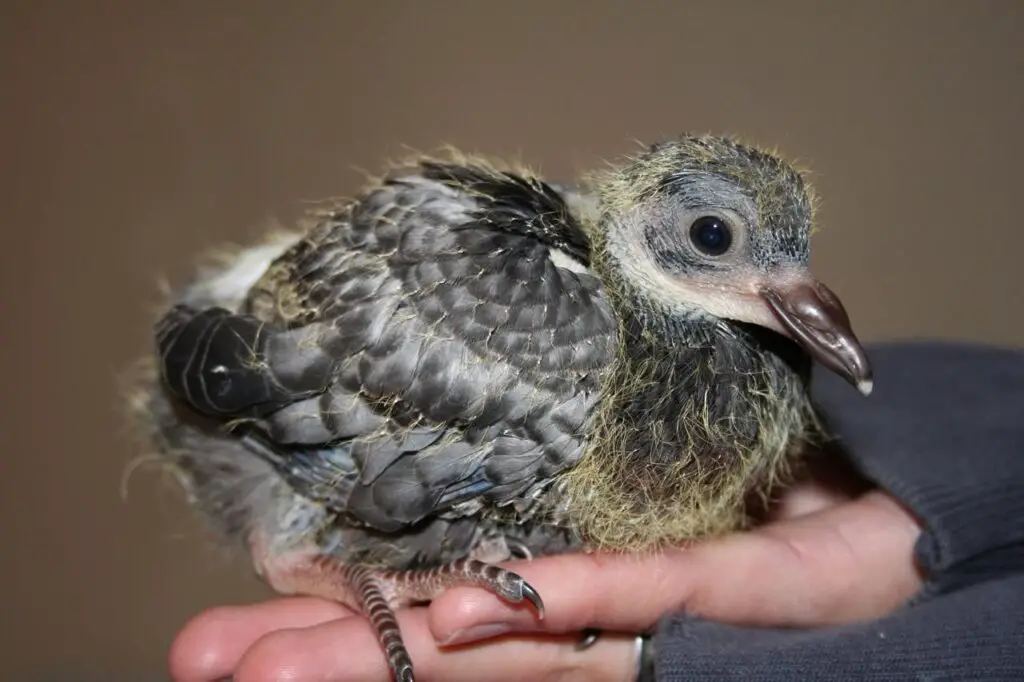
Conclusion
Unlike the charming and charismatic image of adult pigeons, baby pigeons exhibit a stark contrast in their appearance. When newly hatched, squabs are incredibly delicate and vulnerable, bearing little resemblance to their parents. Their bodies are mostly covered in sparse, soft, and downy feathers that range in color from pale gray to off-white. These fluffy feathers give them a somewhat disheveled appearance, making them seem somewhat unkempt. One of the most distinctive features of baby pigeons is their disproportionately large heads in comparison to their bodies.
Their heads appear somewhat oversized, and their eyes are often closed or only partially open during the first few days of their lives. This unique physical trait serves as a visual cue that distinguishes them from mature pigeons. Delving into the appearance of baby pigeons reveals the fascinating contrast between their vulnerability as newborns and their eventual resilience as they mature. Their initial clumsiness and dependence on their parents for warmth and sustenance stand in stark contrast to the self-sufficiency and adaptability they develop as they grow older.
While baby pigeons remain hidden away during their early days, this hidden phase of their lives is crucial for their development. It is during this time that they receive the care and nourishment needed to thrive and eventually contribute to the urban pigeon population. Baby pigeons look like they invite us to reflect on the marvel of life’s continuous cycle and the intricate details that often escape our attention. These young birds, with their unique appearance and remarkable transformation, remind us that even in the heart of our bustling cities, nature’s wonders continue to unfold, right above our heads, waiting to be discovered and appreciated.

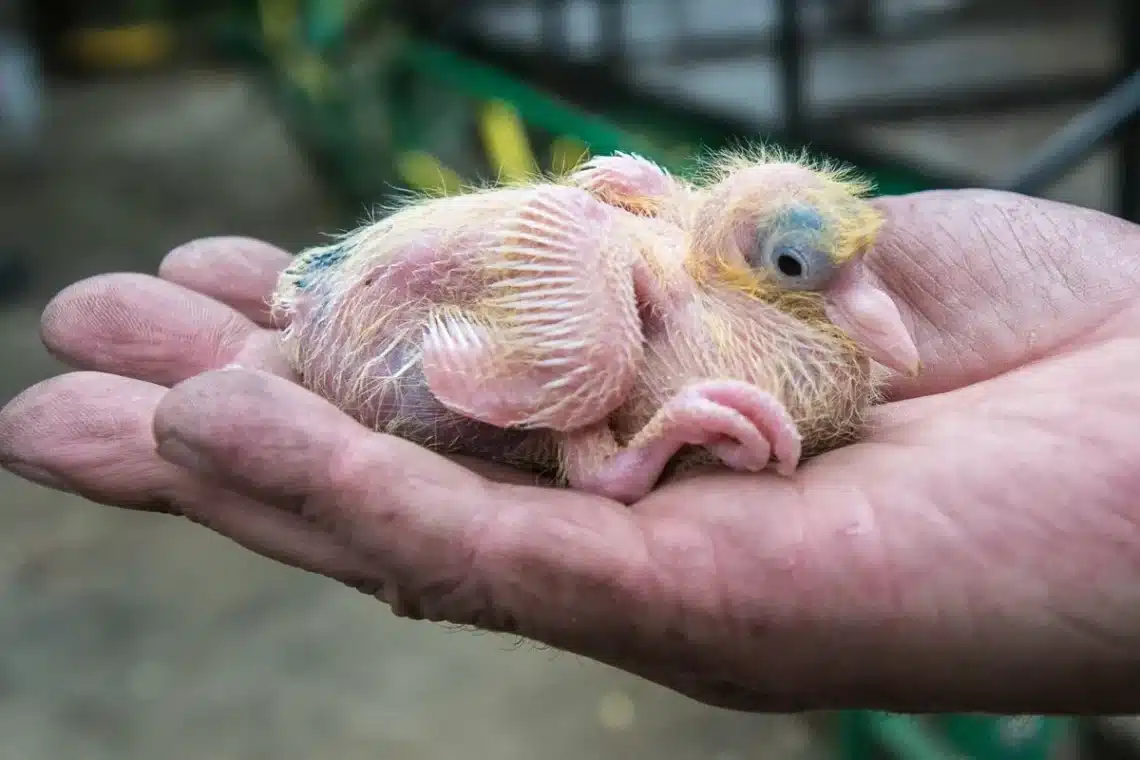
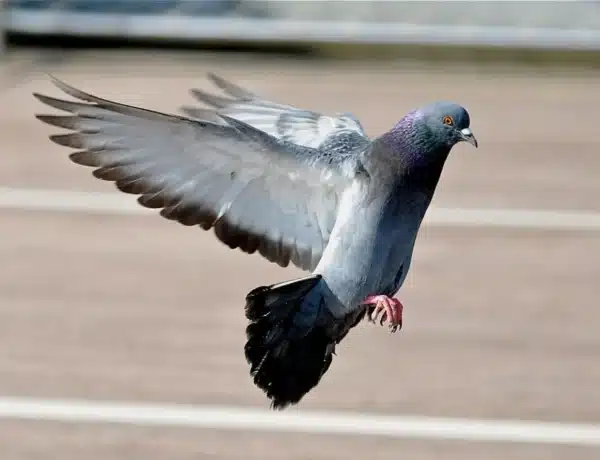
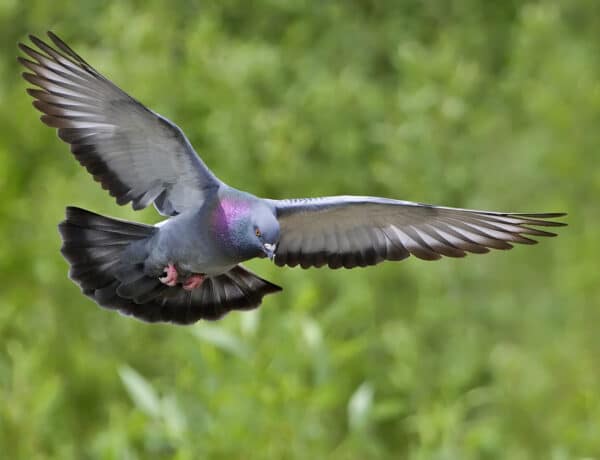
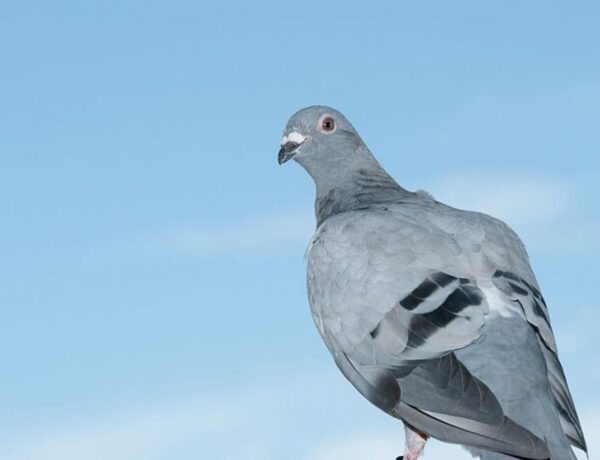
No Comments